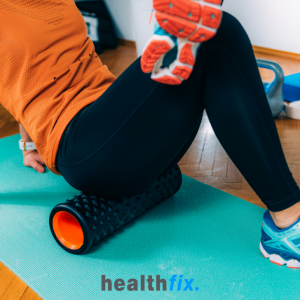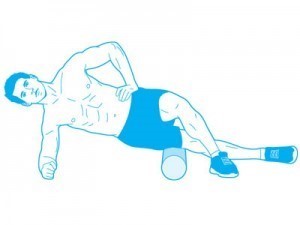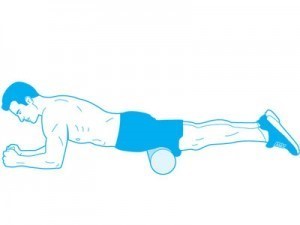
Foam Rollers
What is a Foam Roller?
Foam rollers essential look like large noodles but they can quickly become your best friend. There are many types nowadays of all shapes and sizes. They get used to loosen up before a match or training session as well as serving as a great homework tool to do some physio or trainer prescribed home exercises around mobility and flexibility. When making your selection about which one to use I always recommend that you get one that is practical to fit in your home/ room / home gym (they can be quite large and bigger isn’t always better) and get one that feels comfortable and inviting to use – it shouldn’t be used as a tool of torture. You’ll see these commonly now in Pilates and physio studios as well as commercial gyms and sporting environment including institutes of sport.
________________________________________________________________
What are Foam Rollers used for?
They work on releasing soft tissue, relieving muscle tightness and soreness and they can also be valuable in helping to break down soft tissue adhesions and scar tissue after injury. They can stimulate blood flow and are really valuable in promoting neural down regulation (this is often why they can be sore to first get on but then this soreness eases with a lasting effect of relief of the symptoms that made you get on the roller).
Effectively, any intervention that we put the body through be it a strong sports massage, Chiro or Osteo manipulation, hot / cold pack, dry needling, etc needs to be analysed and accepted by the body. Jumping on foam roller puts a lot of pressure to the area where the brain may be holding some tense muscles or trying to protect it with a pain response. So as you consciously lie on the foam roller, the brain can start to accept that you don’t want those muscles so tense or so much protection of the area and it relaxes; and then you can feel relaxed.
________________________________________________________________
Things to be aware of:
– Make sure you understand and are confident with how you intend to use the foam roller. Our Physiotherapists, Exercise Physiologists and Personal Trainers can help a lot here.
– Don’t push through pain for too long. The whole point is to feel relief so if you’re still experiencing strong pain after say 1 minute, take it easy on yourself and ease up.
– Be aware of any “no pain no gain” or “go hard” on the foam roller commentary. Use your common sense and you’ll be fine. At the end of the day it’s a foam roller so it should never pose as a threat or tool of torture unless you’re trying to use it incorrectly or your body need a lighter intervention to start with.
__________________________________________________________________
A couple of common and popular Foam Roller exercises:
The ITB (great for runners, field sports players and gym goers)
Iliotibial band (ITB) is a band of fascia on the outside of your upper leg, when it is tight it can cause knee and hip pain.
– Lie side on with the affected side on the foam roller, rest your upper body through your forearm. With your unaffected leg, place over affected side and place the full surface of your foot on the ground. Start with the foam roller just above your knee and roll back and forth slowly for 30 seconds to just below your hip bone. For further pressure, place unaffected leg on top of affected side.

_________________________________________________________________
The Quadricep (similar to above demographic plus people who kick in their sport like martial arts, kick boxing, football and AFL):
Tight quadriceps can pull on your patella and cause some compressive pain at the front of your knee (most commonly).
– lie on your stomach with the roller placed under your thighs. Hold your body straight and rest your upper body through your forearms. Roll yourself back and forth slowly from just above your knee to just below your hip bone. For further pressure bend your knees.

If you like these exercises and want some more or you want to get some advice on which foam roller would be best for you please do not hesitate to get in
contact with us, we offer them in our clinics and the team are always happy to help!
 _________________________________________________________________
The Quadricep (similar to above demographic plus people who kick in their sport like martial arts, kick boxing, football and AFL):
Tight quadriceps can pull on your patella and cause some compressive pain at the front of your knee (most commonly).
– lie on your stomach with the roller placed under your thighs. Hold your body straight and rest your upper body through your forearms. Roll yourself back and forth slowly from just above your knee to just below your hip bone. For further pressure bend your knees.
_________________________________________________________________
The Quadricep (similar to above demographic plus people who kick in their sport like martial arts, kick boxing, football and AFL):
Tight quadriceps can pull on your patella and cause some compressive pain at the front of your knee (most commonly).
– lie on your stomach with the roller placed under your thighs. Hold your body straight and rest your upper body through your forearms. Roll yourself back and forth slowly from just above your knee to just below your hip bone. For further pressure bend your knees.
 If you like these exercises and want some more or you want to get some advice on which foam roller would be best for you please do not hesitate to get in contact with us, we offer them in our clinics and the team are always happy to help!
If you like these exercises and want some more or you want to get some advice on which foam roller would be best for you please do not hesitate to get in contact with us, we offer them in our clinics and the team are always happy to help! 
